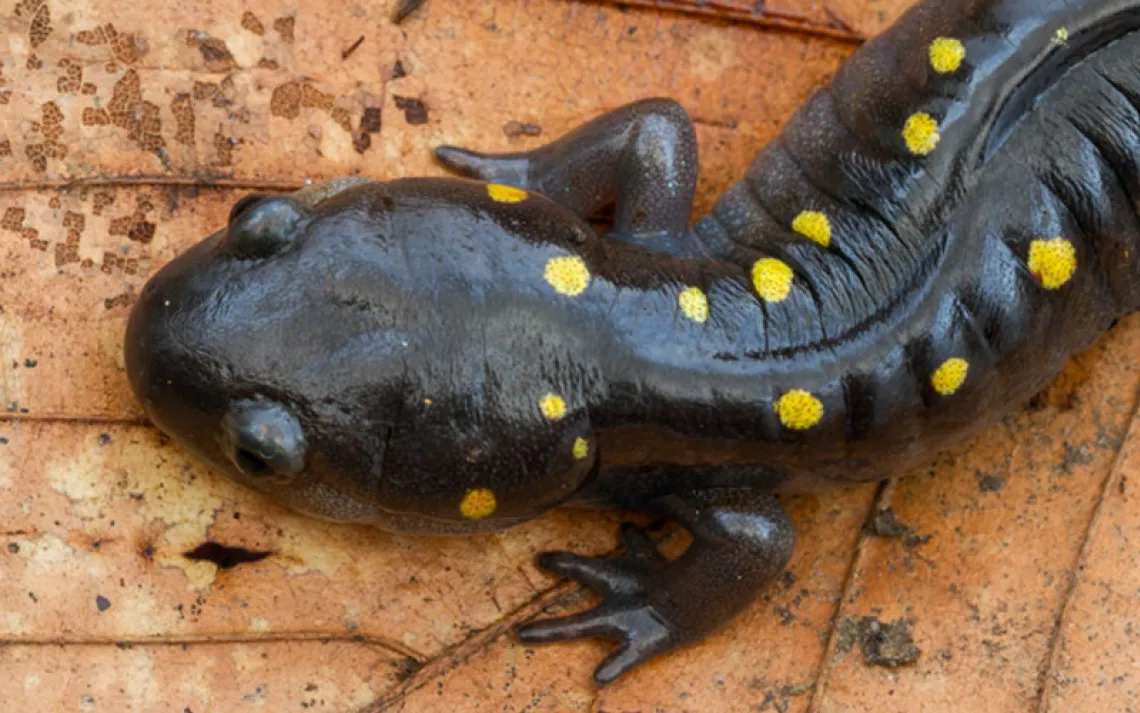How Bats Survive in An Increasingly Noisy World
New research shows some bats can switch to echolocation in noisy environments

Fringe-lipped bat flying | Photo by Alex Lang
It’s not easy being a bat. Across the globe, deforestation, disease, and cultural taboos have taken a heavy toll. White-nose syndrome is decimating colony bats in the eastern United States and was recently discovered on the West Coast. Wind turbines attract and kill thousands of bats during migration season. Now scientists are developing a better understanding of another, albeit less familiar threat—noise pollution—and the innovative way the flying mammals are compensating.
For bat species that hunt by listening with their ears, traffic noise, generators, and other human-created disturbances pose a major problem. But according to a new study in the journal Science, some bats have a backup option: They switch to echolocation when they can’t hear the animals they hunt.
An international team in Gamboa, Panama, looked at the effect of noise on fringe-lipped bats, Trachops cirrhosus, in particular. The bats often feed on the tungara frog, Engystomops pustulosus, which produces a whining call interspersed with chucking sounds for much of the rainy season. The bats key in on these calls when hunting the frogs, swooping up the noisy males.
In an experiment, the researchers molded two realistic “robofrogs” from polycarbon with throat sacks that expand when air is shot into them. In a dark flight cage, the researchers played mating calls emanating from the frogs. The bats used the sound to locate the frogs and snatch a piece of fish off the robo-phibians.
Then the researchers introduced white noise, which obscured the mating sound, and they also turned off the air sac on one of the frogs. When they released the bats, they found that the animals could still locate the frog that inflated its air sac, attacking it more frequently, though bats had trouble locating the frog only making the mating call. The bats switched to echolocation—high-frequency mapping calls that work like sonar—to find their prey, according to the researchers.
On the one hand, the results of this study give hope that some species will be able to adjust naturally to noise pollution. On the other hand, researchers aren’t sure what the overall effects might be. “I think for this paper, we really focus on whether there is a mechanism animals can use to adapt. But it doesn’t show that noise is not a problem,” says study coauthor Wouter Halfwerk of VU University Amsterdam. “The important thing now is to understand what the energetic costs of using more echolocation are. For instance, does it use twice as much energy to locate its prey, and does it balance that with extra food intake?”
While the literature on the impact of human-produced, or anthropogenic, noise on birds and whales is extensive, few researchers have looked at bats. “Because bats depend on sound to hunt through passive listening or echolocation, there’s growing concern that noise pollution can impact the way that they hunt,” says Winifred Frick, senior director of conservation science with Bat Conservation International. “We need to think about the impact humans have and how noise can affect foraging success and can trickle down to reproductive success and survival.”
Jessie Bunkley, a wildlife technician with the Utah Division of Wildlife Resources and a teacher at Utah State University, published a paper in 2013 about the impact of compressor stations on bats in a northwest New Mexico gas field. The compressors make broadband noise day and night, covering the spectrum from low rumblings to high-pitched whines. Looking at 50 sites in the basin, her team found that while bat species that use echolocation to hunt in a range greater than 35 kilohertz were not affected by the noise, those that use echolocation under 35 kilohertz had a 70 percent reduction in activity near noisy compressors versus quieter compressor sites.
The Brazilian free-tailed bat, a scorpion hunter, which, like the fringe-lipped bat, primarily relies on it ears to hunt, dropped its activity by 40 percent near the noisy machines. The bats also altered their calls, narrowing their frequency and calling for longer periods.
“This seems like an area where the more we learn about it, the more call there is for management efforts to reduce this sensory pollutant on the landscape,” says Bunkley, who points out that sound-reducing walls or other baffling technologies could be used to limit the noise of the compressors and other sources of noise. “We put up walls for residents near highways, and we need to extend our ideas about who that noise could be bothering. We need to be concerned about organisms other than ourselves.”
Halfwerk says he’d like to extend his study and bring it into the field to learn how the bats adapt to urban noise along with light pollution, food availability, and vegetation cover. “The more we look into it, the more we realize bats and all sorts of other animals use all the senses they have available to them,” he says. “Really, we don’t know what certain bat species can perceive or not. It’s a gradient I expect.”
 The Magazine of The Sierra Club
The Magazine of The Sierra Club



